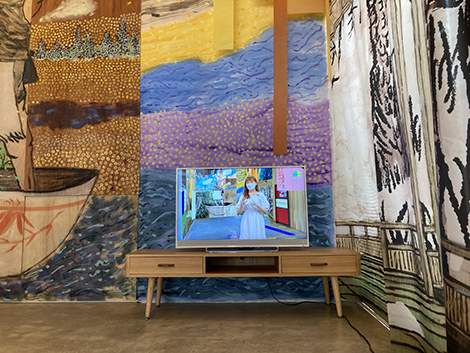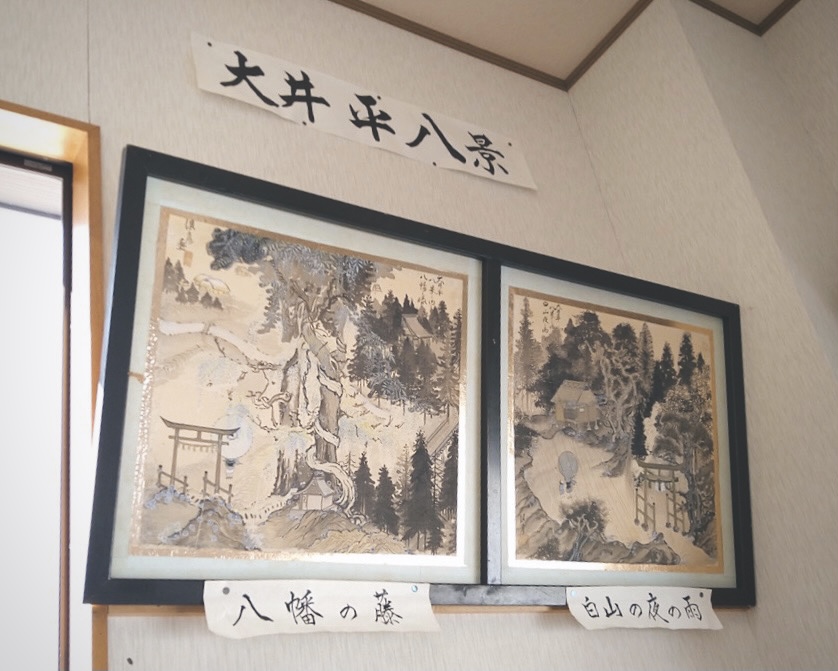Reviews & Articles
Creative Collaboration Transcends Borders and Boundaries: Hong Kong at Echigo-Tsumari Art Triennale
Natalie Ho
at 10:56pm on 27th February 2022




Captions:
1. The banner at the entrance sets the tone for the visit, it says: "breathing freedom at one’s (countryside) hometown".
2. Historical research images provided to Lam by the local team in Echigo.
3. While half of Hong Kong House is left starkly empty, the other half of the house is a rich tapestry of evocative texts, paintings and moving images.
4. The University of Hong Kong art students created videos inspired by the history and culinary arts of Hong Kong and Echigo.
This year marks the commencement of the fourth exhibition of “Hong Kong House at Echigo-Tsumari Art Triennale”, commissioned by the Art Promotion Office (APO) of the Leisure and Cultural Services Department. Featured Hong Kong artist Lam Tung-pang was unable to visit the site in person due to travel restrictions and had to rely on research and the help of local people to complete this project remotely.
With the pandemic disrupting the way people work and live in a fundamental way, artists also have to navigate this strange new world in their attempt to create art that is relevant today. In this context, the Echigo-Tsumari Art Triennale (ETAT), one of the largest international outdoor art festivals in the world, has become a platform that takes creative collaboration between international artists and the local community to a different level.
ETAT scatters the artworks across some 200 villages in the Niigata region, prioritising community building over optimisation and efficiency that usually take precedence in the world of contemporary art. Hong Kong House is located at Tsunan, a village that Lam had to learn through literature, interviews with locals, Google maps and other secondary sources to imagine himself being there and create his work Half-step House.
Meanwhile, the local team in Niigata helped Lam by answering his questions about Tsunan, and provided him with pictures of locations and domestic items that could offer him inspiration about life in Tsunan. Lam said the artist is like a glue that puts everything together. So while he collected these images and items from Tsunan and its surrounding area and eventually distilled them into themes and sceneries, he also added distinctively Hong Kong elements to make his work an interaction between the two places–a rural community and a city.
“I want to show an important link between city and nature, which is a human one. A Hong Konger who lives in Tsunan told me that youngsters in rural Japan often leave home to go to the cities to work. So while they dream about living in a city, there is also a yearning for home where they feel they can breathe freely, where they can relieve stress,” Lam said.
“The big banner outside Half-step House says 「在乡呼吸自由」, meaning breathing freedom at one’s (countryside) hometown, should speak to both Japanese people and Hong Kongers alike.”
Lam also took virtual trips around Tsunan using Google maps. “It is interesting to see everything through someone else’s eyes, and also see the same location over time. You can find out how the same bridge looked like 10 years ago versus this year, and how it looks in the summer and winter. I feel like I’m collating what other people share with me.”
He also made requests to his local team to send him pictures of places and things he found interesting. They were sometimes asked to see places that they would not normally go which surprised them. That creative process is also recorded in the exhibits at Half-step House.
Half-step House is so named because one half of the house is decorated with a patchwork of texts, music, graphics, moving images and other installations, arranged to conjure up an indoor landscape that denotes the changing seasons, while the other half is left starkly empty–an intentional void to be filled up by visitors’ own imagination to complete the landscape.
The Hong Kong House project includes an intern initiative launched by the APO and The University of Hong Kong, which allows students from the Department of Art History to assist in the creative process. Lam invited the students to his studio and presented his themes to them, so that they could understand firsthand how to turn research ideas into art.
The interns were then challenged to create something based on Lam’s themes. For example, rice was one of the themes that connected Shatin, where Lam grew up, and Echigo. The students expanded on the idea and created a series of five cooking shows called “The Tastes of Land and Water”, to shine light on the very different fates of the rice fields in Shatin and Echigo, and celebrate Hong Kong and Japanese culinary cultures. They also staged pseudo TV shows featuring Cantopop songs adapted from Japanese music. These videos are also shown at the Half-step House and are part of this thought provoking project that celebrates humanism, nature, creative collaboration and cultural interaction.
